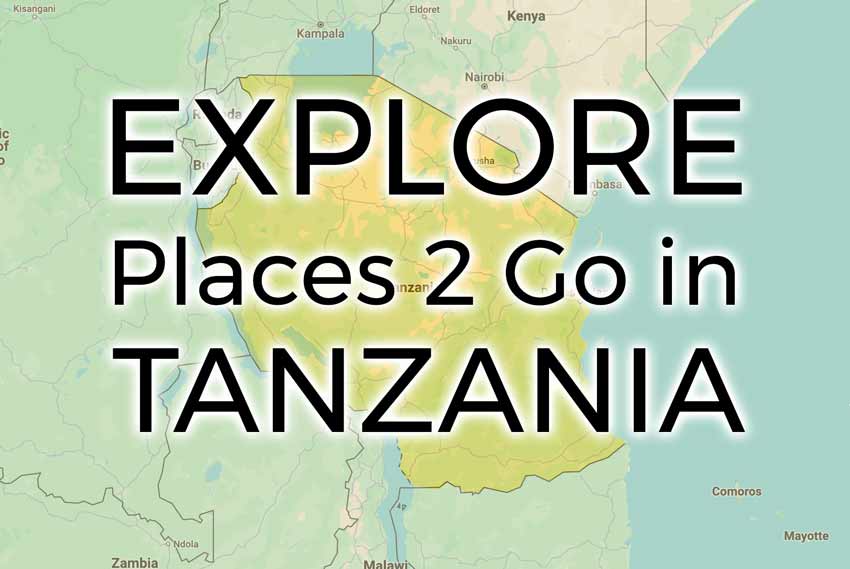Table of Contents
- Discover Ruaha National Park Tanzania Safari
- Wildlife Highlights in Ruaha
- Activities and Safari Experiences
- Accommodation Options in Ruaha
- Best Time to Visit Ruaha
- The Bottom Line
- FAQs
Discover Ruaha National Park Tanzania Safari
Ruaha National Park is the second largest national park in Tanzania and remains one of the country’s most pristine wilderness areas. Located in southern central Tanzania, it can be reached by flight from either Arusha or Dar es Salaam. Many travelers combine it with a visit to Selous to extend their safari adventure. The park spans a vast area dominated by the Great Ruaha River, which serves as a lifeline for wildlife. During a ruaha national park Tanzania safari, visitors witness animals gathering along the riverbanks to drink, bathe, and interact. This makes the park a perfect destination for travelers who want to experience wildlife in an environment that feels untouched and authentic. Its remote location ensures fewer crowds, providing a peaceful and intimate safari experience.
The landscape is diverse, featuring miombo woodlands, acacia plains, and riverine forests. Each of these habitats supports different species of animals and birds, creating endless opportunities for observation and photography. Unlike some of the more frequented parks in Tanzania, Ruaha offers a quiet, less commercialized safari where visitors can truly connect with nature. Whether it’s spotting a herd of elephants crossing a savanna or observing birds at the river, every moment feels unique and personal.
Wildlife Highlights in Ruaha
Ruaha National Park is celebrated for its large and varied population of wildlife. It is particularly famous for elephants and buffalo, which often appear in impressive herds. Lions, leopards, and cheetahs are common sights, offering excitement and adventure on every game drive. What sets Ruaha apart are its rare species, such as sable and roan antelope. Seeing these animals in the same area is a highlight for many safari enthusiasts. The park is also home to the increasingly rare wild dog, which adds to its appeal among wildlife photographers and conservationists.
Birdwatchers will also find Ruaha rewarding. The Great Ruaha River attracts an array of bird species, making it a paradise for those who enjoy observing both common and exotic birds. From waterbirds on the riverbanks to raptors soaring overhead, every visit can provide a new birding experience. Game drives often reveal interesting interactions between species, whether it’s predators hunting or antelopes grazing peacefully. These sightings make a ruaha national park safari exciting for families, solo travelers, and experienced safari-goers alike.
Activities and Safari Experiences
Ruaha offers more than just traditional game drives. Walking safaris provide a closer connection to the environment. Guided by experienced rangers, visitors learn about local flora, animal tracks, and the ecosystem’s dynamics. This hands-on approach allows travelers to understand wildlife behavior in a way that game drives cannot fully capture. Each walk feels immersive, with the sounds of the bush, the scent of the river, and the occasional glimpse of wildlife creating memorable experiences.
Game drives are a core activity in Ruaha. With its expansive landscapes, the park gives travelers the chance to cover different habitats and spot a variety of species. The combination of morning and evening drives maximizes sightings, as wildlife tends to be more active during cooler hours. For photographers, Ruaha offers excellent light conditions and natural backdrops, making every shot feel cinematic. Spending time observing animals in their natural environment allows visitors to appreciate the diversity and complexity of this unique park.
Accommodation Options in Ruaha
Accommodation in Ruaha caters to different preferences, from comfortable mid-range lodges to luxury safari camps. Mid-range options like Mdonya Old River Camp and Ruaha River Lodge provide cozy environments with modern comforts while keeping guests close to nature. These camps are ideal for travelers who want a balance of adventure and comfort.
For those seeking luxury, camps such as Kwihala Camp, Jongomero, Kigelia Camp which operates seasonally, and Mwagusi Safari Camp offer high-end amenities, exceptional service, and immersive safari experiences. Many of these camps are located in prime wildlife areas, allowing guests to enjoy views of the savanna, river, and wildlife from their tents or lodges. Staying in these camps enhances the safari experience, as guests can witness animals moving through their surroundings without leaving the property. Regardless of the choice, accommodations in Ruaha complement the natural beauty of the park while ensuring comfort and convenience.
Best Time to Visit Ruaha
Timing is key to making the most of a ruaha national park safari. The dry season is generally considered the best time to visit because animals congregate near rivers and waterholes. This makes wildlife viewing more predictable and increases the chances of spotting predators like lions and leopards as they hunt. The dry season also provides excellent conditions for walking safaris and photography.
Due to its size and remote location, spending at least three nights in the park is highly recommended. This allows sufficient time for multiple game drives, walking safaris, and relaxation between activities. Visitors who rush through may miss out on the diversity of wildlife and the full range of experiences the park has to offer. Planning ahead and allocating enough time ensures that travelers can enjoy Ruaha without feeling pressured, creating a more rewarding and fulfilling safari experience.
The Bottom Line
Ruaha National Park is a safari destination that offers authentic encounters with nature in a tranquil and unspoiled setting. Its large herds of elephants and buffalo, combined with predators like lions, leopards, and cheetahs, make it a thrilling location for wildlife enthusiasts. Rare species such as sable and roan antelope, along with the elusive wild dog, provide an extra incentive for visitors seeking unique wildlife experiences.
Access 2 Tanzania specializes in creating tailored packages for a ruaha national park safari. With expertise in the park’s logistics and wildlife patterns, we ensure that travelers enjoy seamless and memorable adventures. Accommodation options range from mid-range lodges to luxurious camps, all designed to complement the safari experience while providing comfort and convenience.
From guided game drives to walking safaris, Ruaha delivers a complete wildlife adventure that leaves lasting memories. For travelers seeking an unspoiled and unforgettable safari, Ruaha National Park is an exceptional choice.
FAQs
- How do I reach Ruaha National Park?
Ruaha is most conveniently accessed by flights from Arusha or Dar es Salaam. Driving is possible but takes significantly longer. - How many nights should I plan in the park?
A minimum of three nights is recommended to fully enjoy game drives, walking safaris, and the diverse wildlife. - What makes Ruaha’s wildlife unique?
The park features rare species like sable and roan antelope and the increasingly rare wild dog, alongside large herds of elephants and buffalo. - When is the best time for wildlife viewing?
The dry season is ideal as animals gather near water sources, making sightings more frequent and predictable. - What accommodation options are available?
Mid-range camps include Mdonya Old River Camp and Ruaha River Lodge. Luxury options are Kwihala Camp, Jongomero, Kigelia Camp (seasonal), and Mwagusi Safari Camp.
“A great safari company. Very good service. Attention to detail. Logistics were perfect. Good recomendations during our safari. Excellente safari guide.”


